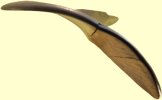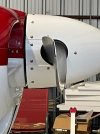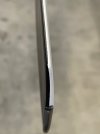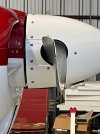dbahn
Pattern Altitude
I was recently asked to display some of my collection of WW1 era propellers at a local art show (Waitsfield, VT) with a theme of "Aloft" - mostly birds, butterflies, photography, paintings and anything aerial. I did this once before in another location, and we found that the pilots gave the exhibit a glance or two, but the artists tended to stand back, then move around, draw things in the air with their fingers and generally appreciate the form itself. The display has been well received by artists at this venue as well.
All of the props in the display were produced over 100 years ago, the top one was made by Requa Gibson before they went bankrupt in 1912, just nine years after the Wright's first flight. (I kept the most valuable part of the collection at home, including an original hand carved, chain driven Wright style from the early 1900s. See note below.)
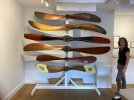
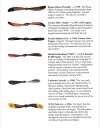
For anyone interested, I've created web pages for many of the props that I've owned over the years but have gradually thinned down to about 20 of the really rare ones, e.g Bleriot XI, Sopwith Camel, SPAD VII and many others.
All of the props in the display were produced over 100 years ago, the top one was made by Requa Gibson before they went bankrupt in 1912, just nine years after the Wright's first flight. (I kept the most valuable part of the collection at home, including an original hand carved, chain driven Wright style from the early 1900s. See note below.)


For anyone interested, I've created web pages for many of the props that I've owned over the years but have gradually thinned down to about 20 of the really rare ones, e.g Bleriot XI, Sopwith Camel, SPAD VII and many others.
Last edited:

